Phad Paintings of Rajasthan
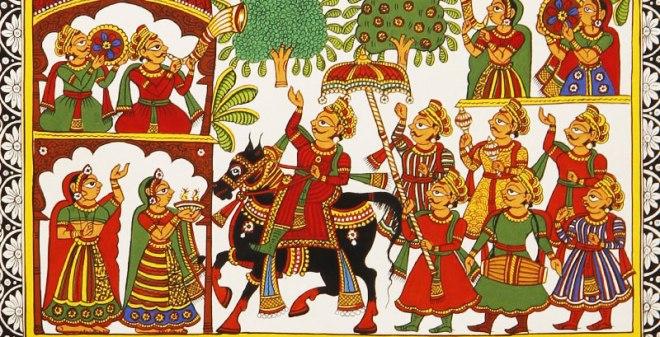
Phad painting of Rajasthan is a captivating art form with a remarkable history and a distinct origin. It stands out for its unique storytelling approach and the efforts dedicated to its revival. This style of religious scroll painting narrates the tales of local deities and gods, and it holds a special significance in the culture of Rajasthan. The paintings, known as “phads,” are unfolded or unrolled after sunset in front of the village, hence the name “phad” meaning “fold” in the local dialect. With vibrant colors and intricate details, phad paintings bring to life the heroic exploits of gods and Rajput warriors, portraying characters like Devnarayanji and Pabuji.
For the making of this unique painting they use thirty feet long and five feet wide cotton cloth.There colour palette is full of natural vegetable colours. They use lamp during the narration of the painting. They consist of red, yellow, blue, green, orange, brown, black derived from the stones and the mineral. The colours are prepared by the women artisans while the preparation of the canvas through applications of starch and kheriya gond (indigenous glue) and ghotana (burnishing) is done by men.
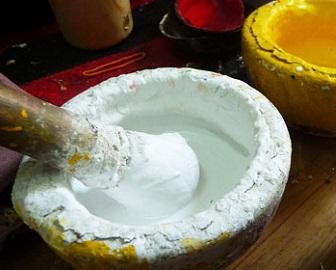
The creation of a phad painting demands exceptional skill and attention to detail. The process begins by applying the colors to the prepared cotton canvas. Each color serves a specific purpose, such as yellow for creating the initial outline and ornamental details, orange for limbs and torsos, green for trees and vegetables, brown for architectural structures, red for royal clothing and flags, and blue for water or curtains. Black is used for outlining the composition.
The eyes, considered the most crucial aspect of the painting, are added last, breathing life into the characters. The canvas, adorned with intricate colors and details, is then ready to be worshiped and admired for its artistic and spiritual significance.
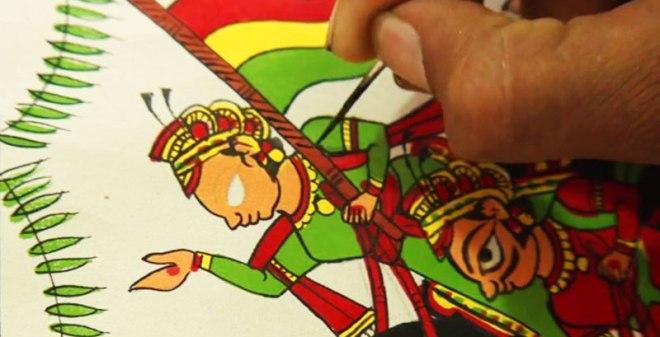
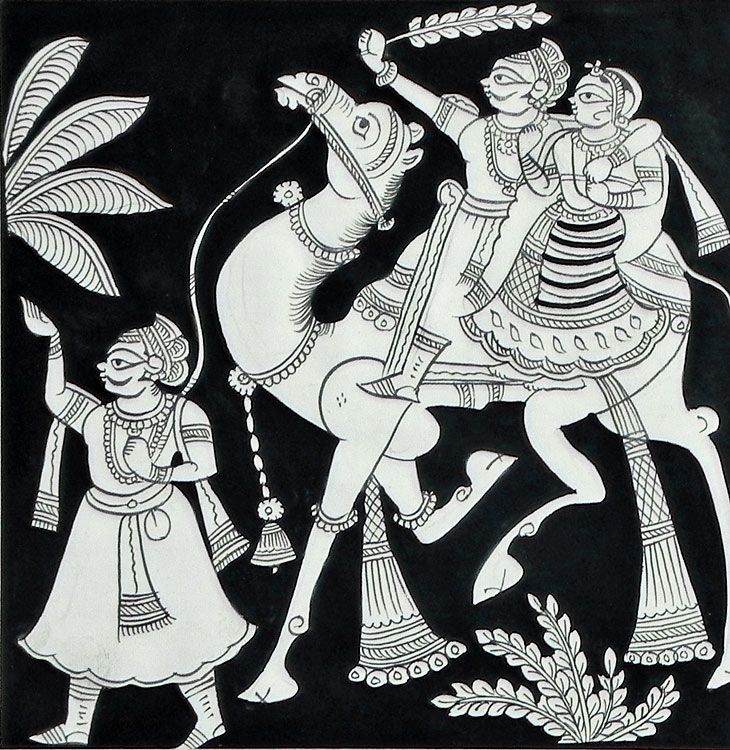
Mainly the Phad painting is the main product of this craft. But due to less consumption of this product from the costumers the artisans have blended it with other traditions and are using it on apparels etc and making the same painting characters on the sarees, curtains, bedsheets etc. Basically the textile sector where they have cloth as the base medium.
Madhubani Paintings from Mithila
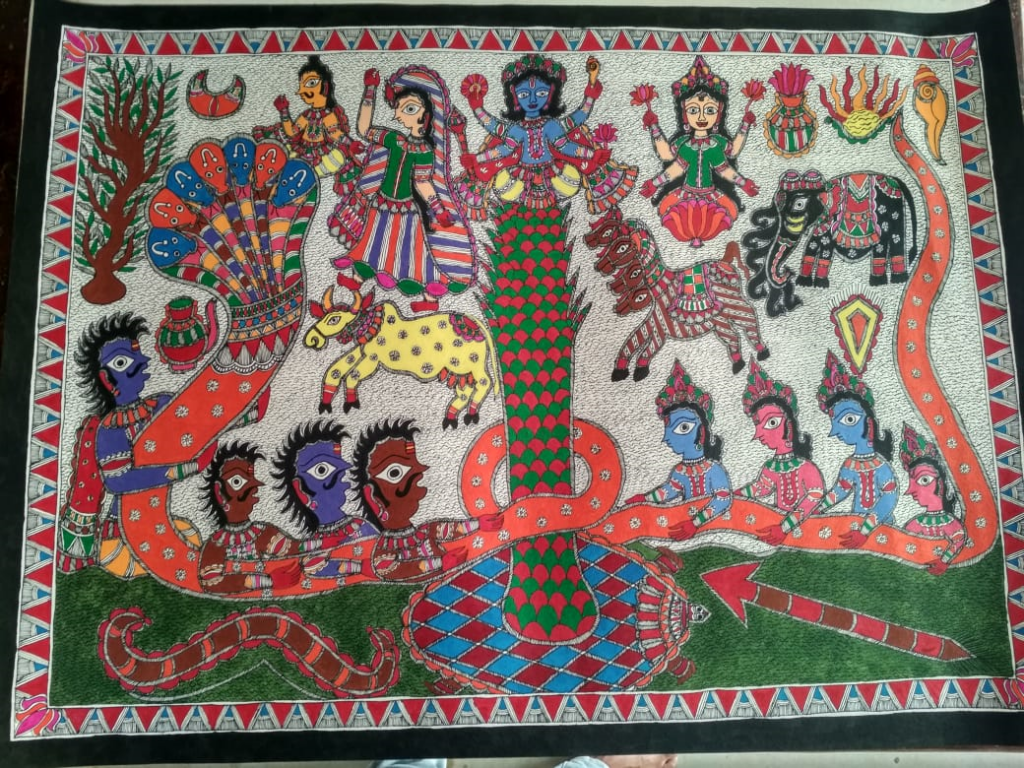
Madhubani painting, also known as Mithila painting, is a traditional folk art form that originated in the Mithila region of Bihar, India. It is characterized by its vibrant colors, intricate patterns, and unique storytelling. Madhubani paintings depict mythological themes, nature, and everyday life, and they often adorn the walls of homes during festivals and special occasions. This ancient art form has been passed down through generations and continues to be practiced by skilled artisans, preserving the cultural heritage of the region.
The creation of Madhubani paintings involves the use of natural materials sourced from the local environment. The artists traditionally use natural dyes derived from plants and minerals to bring life to their artwork. These dyes are obtained from various sources such as turmeric, indigo, vermilion, and lamp soot. The canvas for Madhubani paintings is usually prepared by coating handmade paper or cloth with a paste made from powdered rice. The brushes used for painting are made from twigs, brushes, or even fingers, allowing for intricate detailing and precision in the artwork.
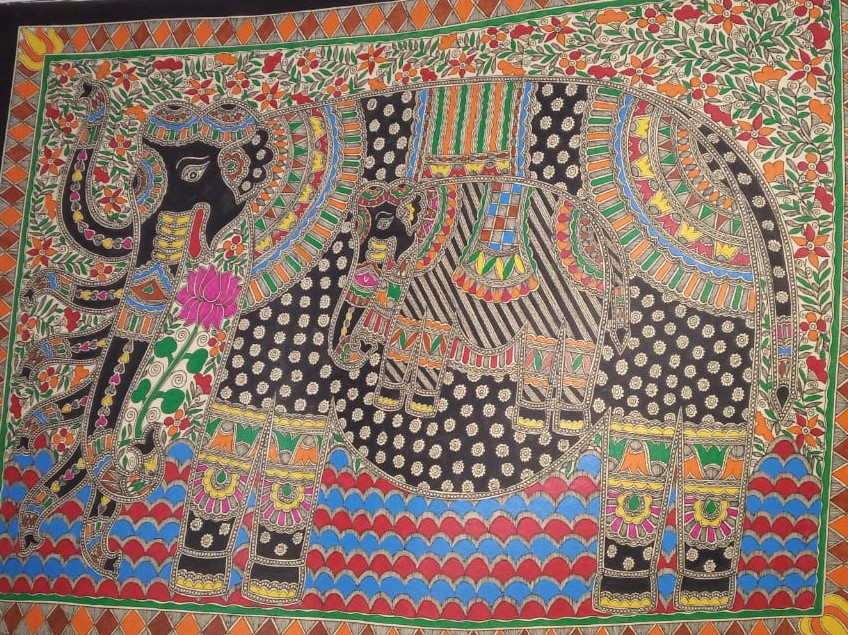

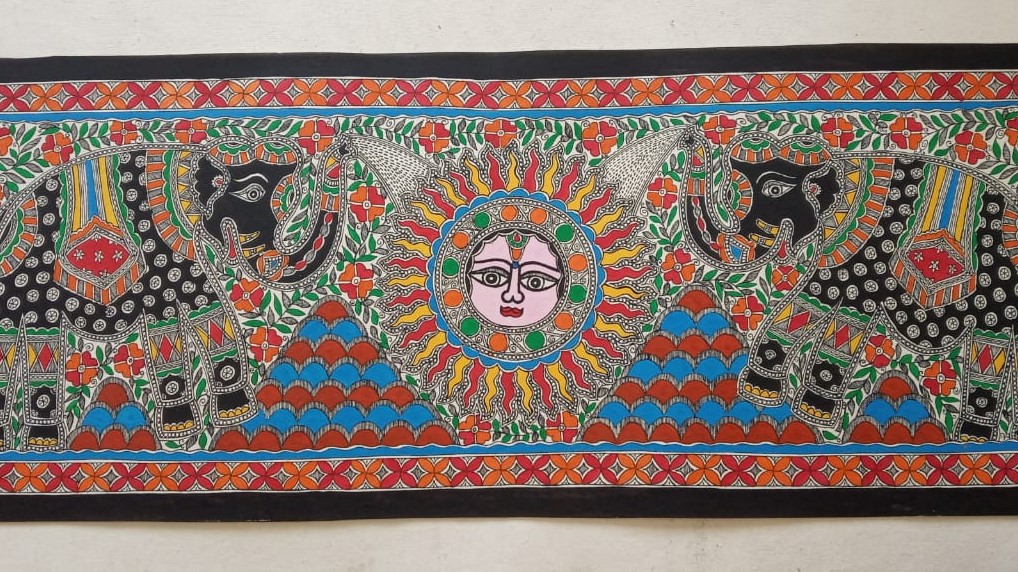
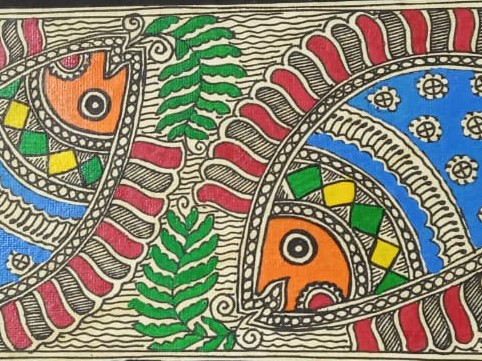
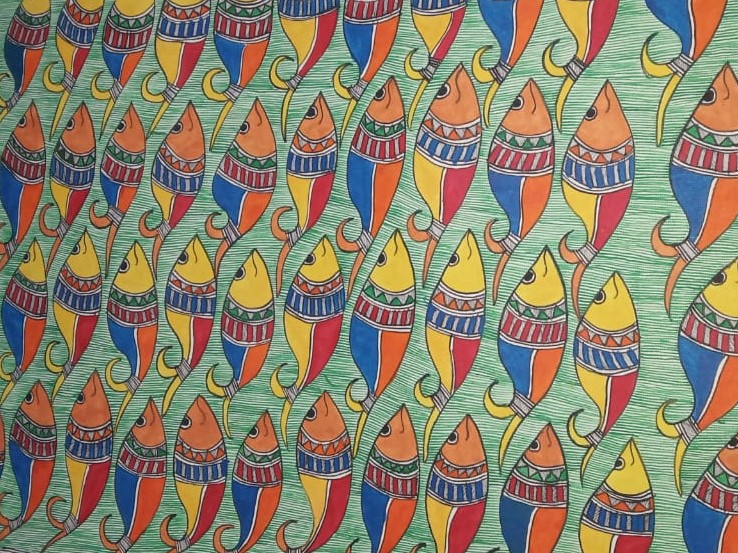

The making of a Madhubani painting begins with the artist sketching the desired design or motif using a pencil or brush. The outlines are then filled in with vibrant colors using a technique known as “line and fill.” This involves using fine lines to create intricate patterns and then filling them with colors using a brush or fingers. The colors are applied in a controlled manner, with different shades and hues used to bring depth and dimension to the artwork. The process of painting a Madhubani piece can be time-consuming, often taking several days or even weeks to complete, depending on the size and complexity of the artwork. Once finished, the painting is left to dry before being framed or displayed.
Madhubani painting is not just a form of artistic expression, but also a way to preserve cultural traditions and narratives. It reflects the vibrant culture, mythology, and folklore of the Mithila region. With its rich colors, intricate patterns, and skilled craftsmanship, Madhubani paintings continue to captivate art enthusiasts and serve as a testament to the creativity and talent of the artists who carry forward this ancient art form
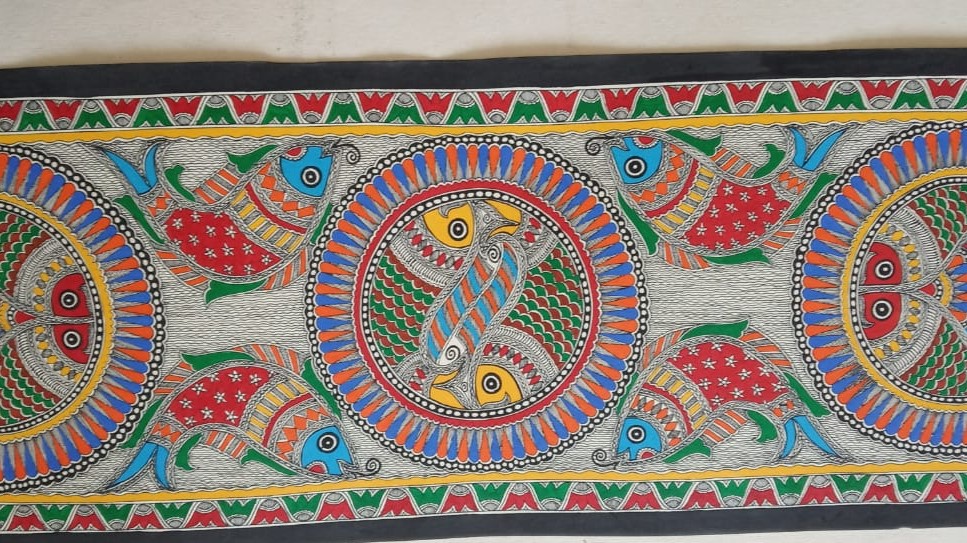
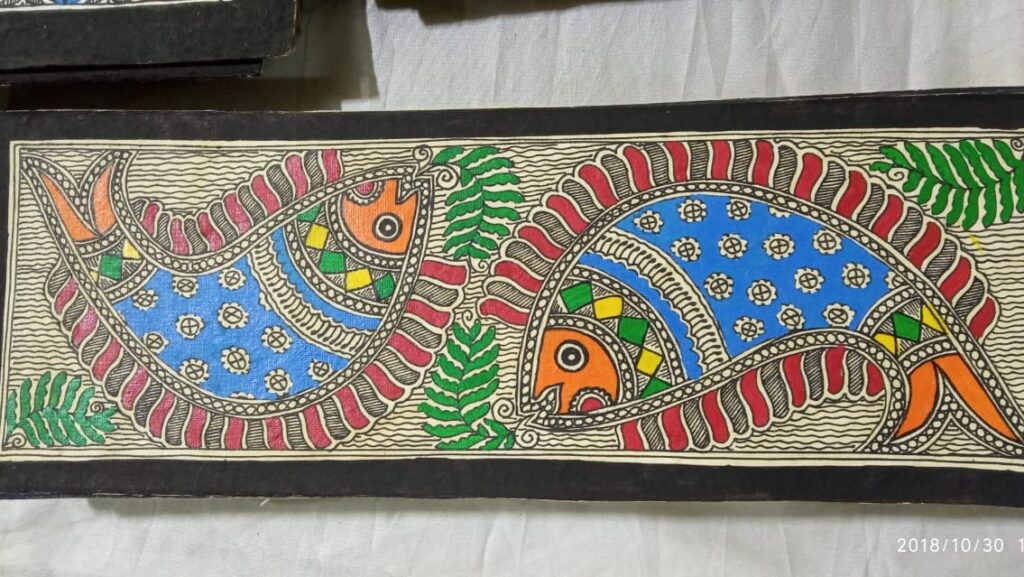
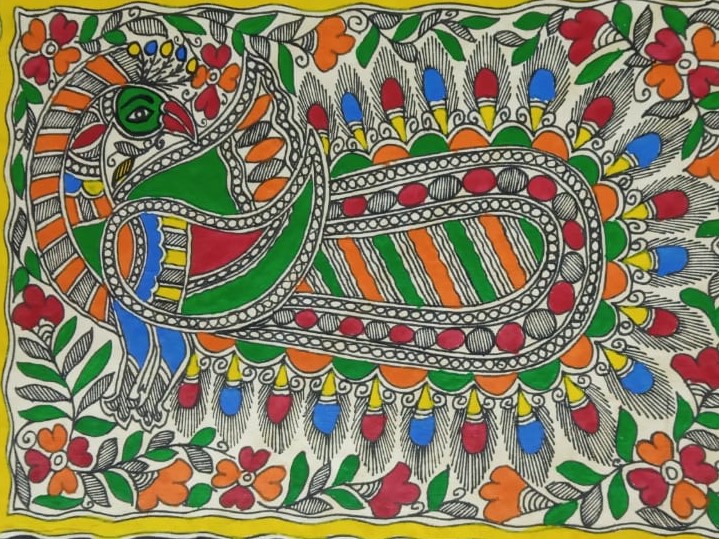
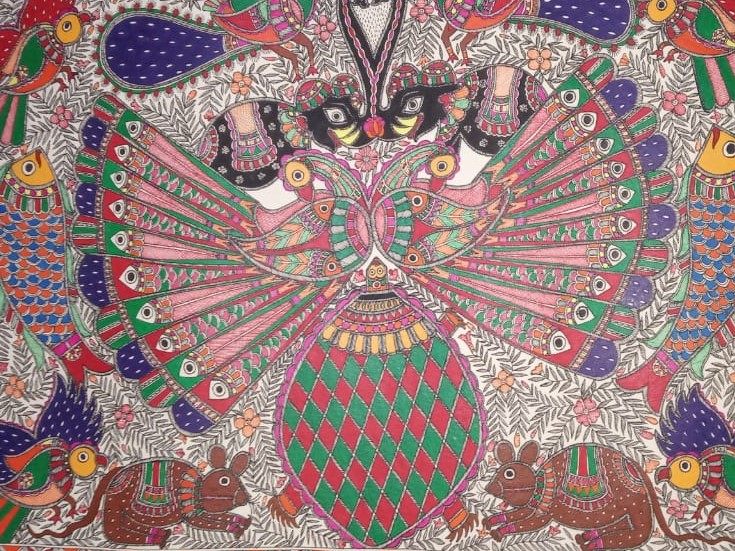
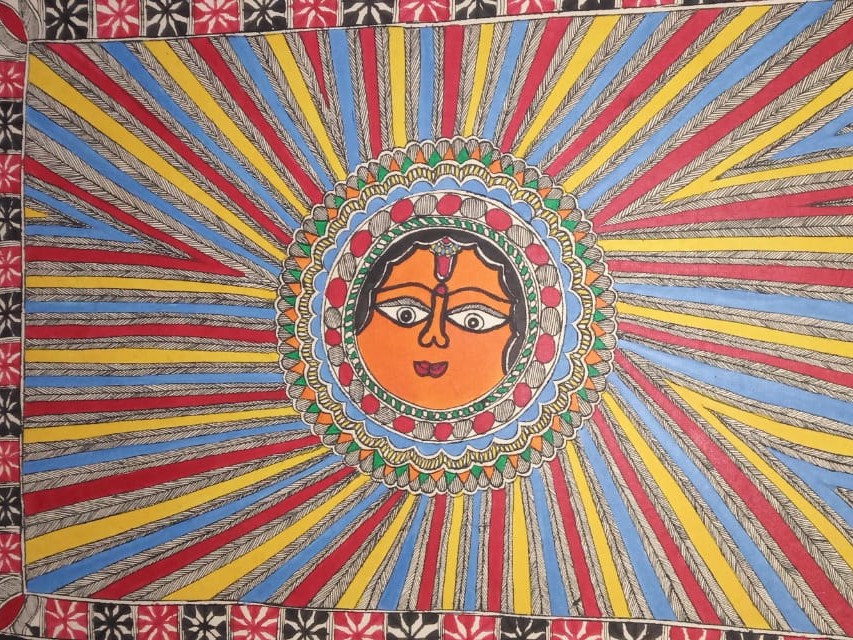
Bengal Pattachitra from West Bengal
Bengal Pattachitra is a traditional art form that originated in the state of West Bengal, India. Pattachitra, meaning “cloth painting,” is known for its intricate details, vibrant colors, and storytelling nature. It has a rich history dating back several centuries and is closely associated with the worship of deities, particularly in the Jagannath cult. Bengal Pattachitra paintings often depict mythological stories, religious scenes, and traditional folklore. The art form has been passed down through generations of skilled artisans, who continue to keep this cultural heritage alive.
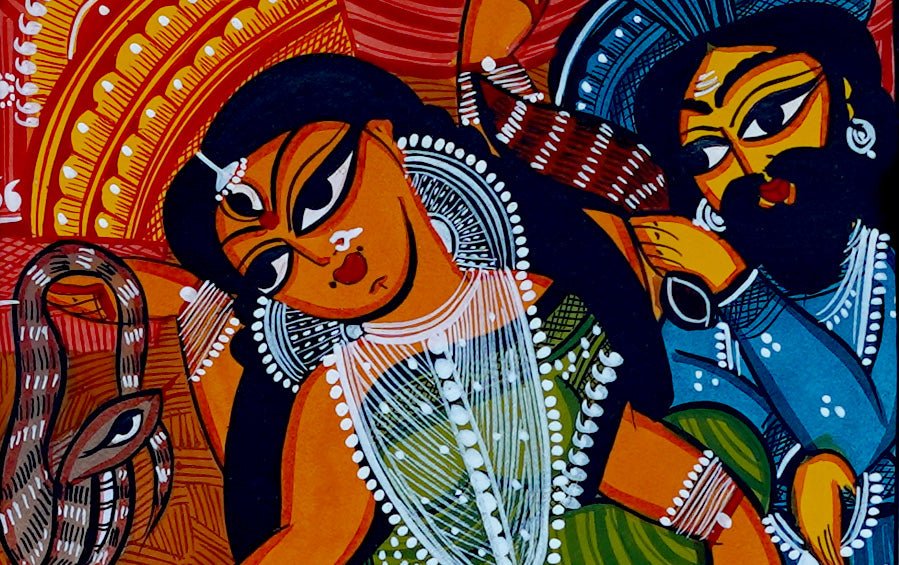
The creation of Bengal Pattachitra involves the use of natural materials sourced from the region. The artists use handmade paper or specially treated cloth as the canvas for their paintings. The colors used are derived from natural sources, such as mineral pigments, vegetable dyes, and even rocks and shells. These colors are mixed with water or natural binders to create a vivid palette. The brushes used for painting are usually made from natural fibers like squirrel hair or goat hair, allowing for precise brushstrokes and intricate detailing. Other tools like bamboo sticks, nibs, and brushes of varying thickness are also used to create different textures and patterns.
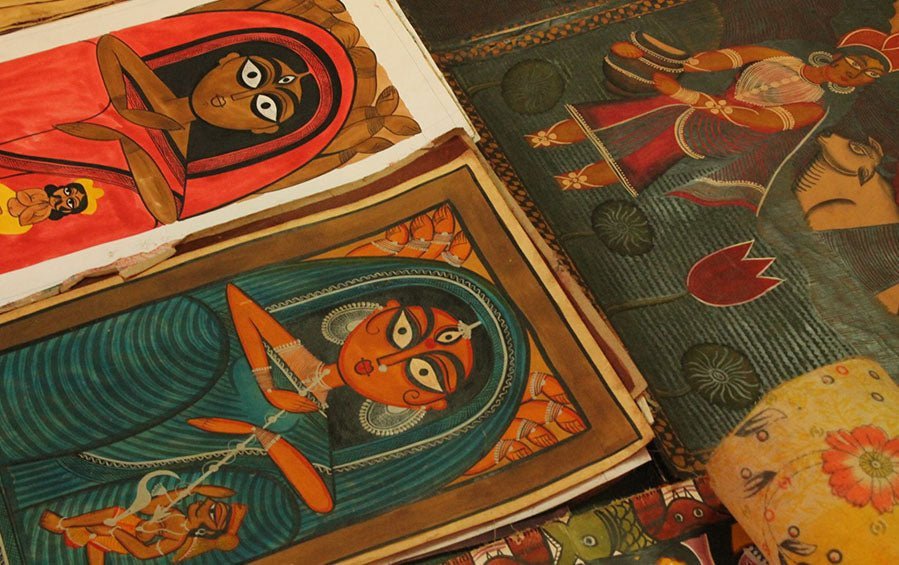
The process of creating a Bengal Pattachitra painting involves several meticulous steps. First, the canvas is carefully prepared by coating it with layers of chalk powder and tamarind seed paste to make it smooth and durable. Then, the outline of the design is sketched using a fine brush or a sharp nib. The painting is done in layers, starting with the background and gradually adding details and colors. The artists employ various techniques like stippling, shading, and cross-hatching to create depth and texture. Fine lines and intricate patterns are used to depict the figures, landscapes, and ornaments. Once the painting is complete, it is left to dry before being framed or mounted.
Bengal Pattachitra not only showcases the artistic skills of the painters but also serves as a medium to convey stories, myths, and cultural traditions. The intricate details and vibrant colors bring life to the paintings, capturing the essence of Bengal’s rich cultural heritage. This art form has evolved over centuries, blending tradition with contemporary influences. Bengal Pattachitra continues to be treasured and celebrated for its aesthetic beauty and its ability to narrate captivating tales through the strokes of a brush.
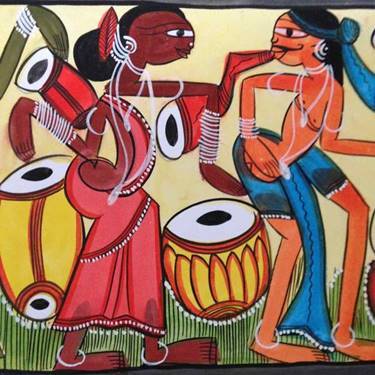
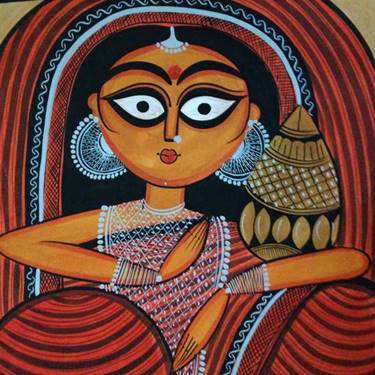
Cheriyal Art from Telengana

Cheriyal art is a unique storytelling form that originated in Telangana, India. It involves the creation of scroll paintings on khadi cloth, depicting scenes from Indian epics and local tales. These vibrant paintings are characterized by stylized figures, intricate details, and the use of natural vegetable dyes for coloring. The artists play a crucial role in preparing the canvas, painting the scenes, and narrating the stories while unfolding the scrolls. Cheriyal art holds a rich cultural heritage and has gained recognition for its distinctive style and contribution to the art world.
The art form of Cheriyal painting has evolved over centuries, with artists like D. Vaikuntam continuing the tradition and exploring new dimensions. Today, Cheriyal art extends beyond traditional scrolls to include smaller formats, masks, and paintings on various mediums. With its distinctive visual language and narrative tradition, Cheriyal art continues to captivate audiences and preserve the cultural heritage of Telangana. It has been granted a Geographical Indication (GI) tag, highlighting its cultural significance and ensuring its protection and recognition.
Gond Painting from Central India
Gond painting is a traditional art form that originated from the Gond tribes of Madhya Pradesh, India. This art style is known for its intricate patterns, vibrant colors, and storytelling themes. Gond paintings are created using natural materials such as natural pigments, plant sap, and brushes made from bamboo twigs or squirrel hair. The artists use fine lines and dots to create mesmerizing compositions that depict the connection between humans, nature, and mythology. Gond paintings are often characterized by the use of bold, vibrant colors and intricate detailing, creating visually stunning and expressive artworks.

The materials used in Gond painting include natural pigments derived from plants, minerals, and charcoal. These pigments are mixed with gum or sap extracted from plants to create vibrant and long-lasting colors. The artists also use fine brushes made from bamboo twigs or squirrel hair to achieve intricate details and patterns in their paintings. Additionally, the canvas for Gond paintings is typically made from handmade paper or cloth.
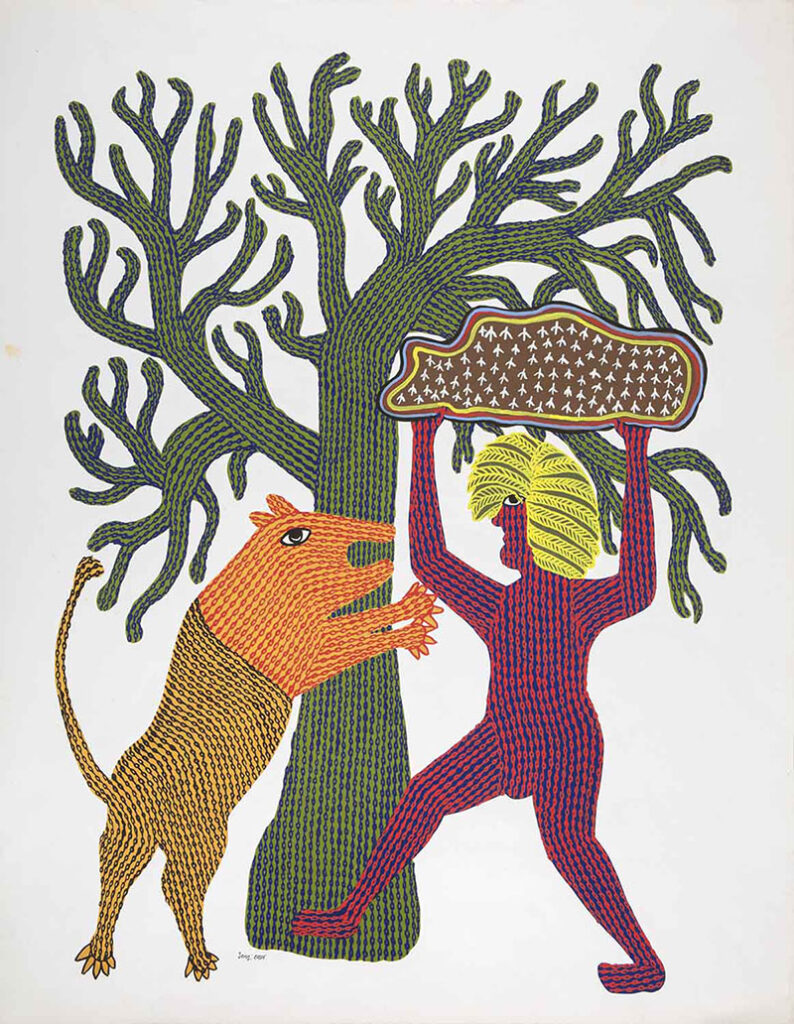
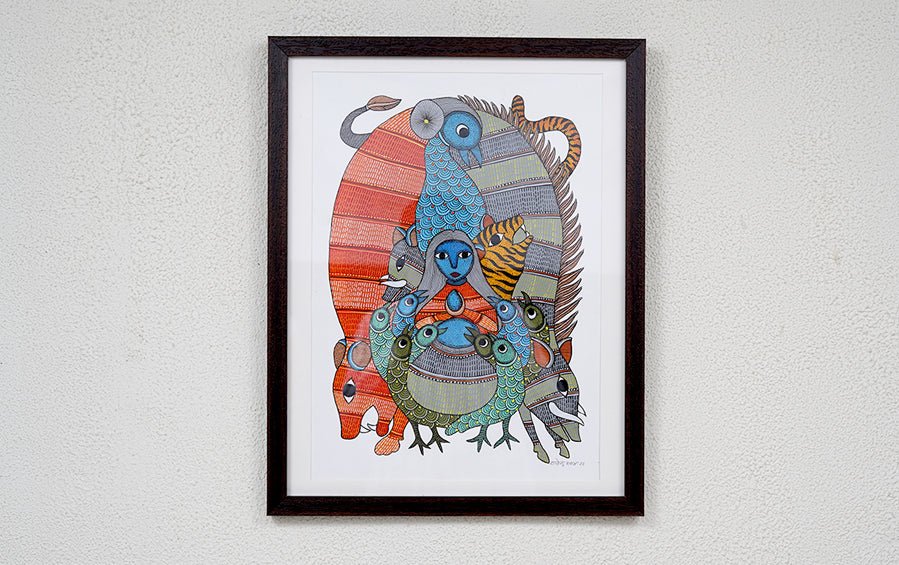
Gond painting is known for its unique patterns and styles, which are deeply rooted in the Gond tribal culture. The artists create intricate designs inspired by nature, such as trees, birds, animals, and traditional motifs. The paintings often depict stories and folklore passed down through generations, showcasing the close bond between humans and nature. Gond art is characterized by its distinctive use of lines and dots, forming intricate patterns that fill the entire composition. Each artist has their own style and interpretation, making every Gond painting a unique and mesmerizing piece of art.
Chittara Paintings from Karnataka

Chittara painting is a traditional art form from the state of Karnataka in India. It is a form of folk painting that originated in the rural regions of the state. Chittara paintings are characterized by their vibrant colors, geometric patterns, and intricate designs. The word “Chittara” means “picture” or “painting” in the Kannada language.
The materials used in Chittara paintings are simple and locally sourced. The artists use natural pigments derived from stones, minerals, flowers, and vegetables to create a wide range of colors. These pigments are mixed with natural binders such as gum or tamarind seed paste to create a paint-like consistency. The artists typically paint on a white or colored background, which can be a cloth, paper, or even walls.

Chittara murals, painted intricately on the red mud coated walls of their houses, depict the important events of their life. Every line in the painting is symbolic of the life around them and the experiences they live through. The art forms, therefore, represent the daily hustle and bustle of their village life, the birds and animals around them, the toys their children play with, the flowers used for pooja, etc.
Warli Painting from Maharashtra
Warli painting is a traditional art form practiced by the Warli tribe, who reside in the Maharashtra and Gujarat regions of India. It is a form of tribal art known for its simplistic yet captivating style. Warli paintings primarily depict scenes from everyday rural life, such as farming, festivals, and rituals.
The materials used in Warli paintings are basic and readily available. The artists use a white pigment made from a mixture of rice paste and water, which is applied on a dark background, typically made from a mixture of cow dung and mud. The white pigment is applied using a bamboo stick or a brush made from a chewed end of a twig.

Warli paintings are characterized by their distinctive style, which consists of geometric shapes like circles, triangles, and lines. The paintings often depict human figures in a stylized manner, represented by simple stick-like forms. The use of repetitive patterns and the absence of perspective in Warli art give it a unique and symbolic appeal. It is believed that these paintings have a spiritual significance and are used as a way to communicate with the deities and seek their blessings.
Today, Warli paintings have gained recognition worldwide and are appreciated for their rustic charm and cultural significance. They serve as a visual narrative of the Warli tribe’s traditions, beliefs, and way of life, keeping their rich cultural heritage alive through art.
